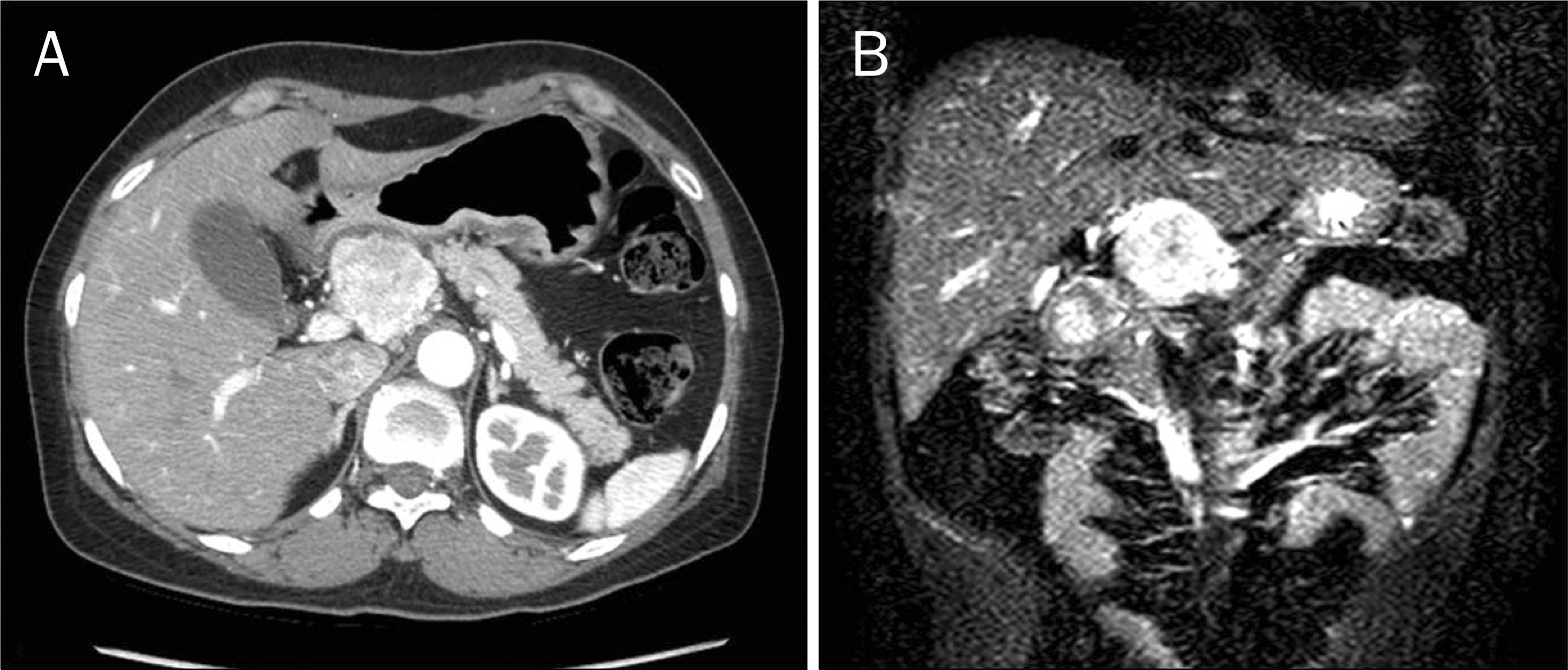Abstract
Follicular dendritic cell (FDC) sarcoma is an extremely rare malignant neoplasm arising from FDCs. The exact origin of FDCs remains unclear; both a hematopoietic lineage origin and a stromal cell derivation have been proposed. Proliferation of FDCs can lead to benign reactive lesions or generate neoplastic conditions. The lesions are most commonly found in lymph nodes and usually involve the head and neck area. Castleman's disease is a rare non-neoplasitic lymphoproliferative disorder. Rare cases of hyaline-vascular Castleman's disease have been associated with FDC sarcoma, but a clonal relationship has not been convincingly demonstrated. A pathway toward tumor evolution, beginning with hyperplasia and dysplasia of FDCs, has been proposed. Despite this known association between Castleman's disease and FDC sarcoma, there have only been few reported cases of sarcoma arising as a complication of pre-existing Castleman's disease, especially in abdominal lesions. We describe here a 51-year-old female with an FDC sarcoma arising from unicentric, hyaline-vascular type Castleman's disease in an intra-abdominal mass. Pathologically, the lesion showed a series of changes during the process of transformation from Castleman's disease to FDC sarcoma.
Go to : 
References
1. Monda L, Warnke R, Rosai J. A primary lymph node malignancy with features suggestive of dendritic reticulum cell differentiation. A report of 4 cases. Am J Pathol. 1986; 122:562–572.
2. Chan AC, Chan KW, Chan JK, et al. Development of follicular dendritic cell sarcoma in hyaline-vascular Castleman's disease of the nasopharynx: tracing its evolution by sequential biopsies. Histopathology. 2001; 38:510–518.

3. Kim JE, Kim CJ, Park IA, et al. Clinicopathologic study of Castleman's disease in Korea. J Korean Med Sci. 2000; 15:393–398.

4. Casper C. The aetiology and management of Castleman disease at 50 years: translating pathophysiology to patient care. Br J Haematol. 2005; 129:3–17.

5. Ruco LP, Gearing AJ, Pigott R, et al. Expression of ICAM-1, VCAM-1 and ELAM-1 in angiofollicular lymph node hyperplasia (Castleman's disease): evidence for dysplasia of follicular dendritic reticulum cells. Histopathology. 1991; 19:523–528.

6. Jaffe ES, Harris NL, Stein H, Vardiman JW. Tumours of haematopoietic and lymphoid tissues. Lyon: IARC;2001.
7. Lee IJ, Kim SC, Kim HS, et al. Paraneoplastic pemphigus associated with follicular dendritic cell sarcoma arising from Castleman's tumor. J Am Acad Dermatol. 1999; 40:294–297.

8. Fonseca R, Yamakawa M, Nakamura S, et al. Follicular dendritic cell sarcoma and interdigitating reticulum cell sarcoma: a review. Am J Hematol. 1998; 59:161–167.

9. Gaertner EM, Tsokos M, Derringer GA, Neuhauser TS, Arciero C, Andriko JA. Interdigitating dendritic cell sarcoma. A report of four cases and review of the literature. Am J Clin Pathol. 2001; 115:589–597.
10. Kang TW, Lee SJ, Song HJ. Follicular dendritic cell sarcoma of the abdomen: the imaging findings. Korean J Radiol. 2010; 11:239–243.

11. Chan JK, Fletcher CD, Nayler SJ, Cooper K. Follicular dendritic cell sarcoma. Clinicopathologic analysis of 17 cases suggesting a malignant potential higher than currently recognized. Cancer. 1997; 79:294–313.
12. Schwarz RE, Chu P, Arber DA. Extranodal follicular dendritic cell tumor of the abdominal wall. J Clin Oncol. 1999; 17:2290–2292.

13. Díaz de Liaño A, Garde C, Artieda C, Yárnoz C, Flores L, Ortiz H. Intraabdominal follicular dendritic cell sarcoma. Clin Transl Oncol. 2006; 8:837–838.

14. Sze DY, Shelton AA. SIR 2008 annual meeting film panel case: Castleman disease complicated by follicular dendritic cell sarcoma. J Vasc Interv Radiol. 2008; 19:1141–1144.

15. Perez-Ordoñez B, Rosai J. Follicular dendritic cell tumor: review of the entity. Semin Diagn Pathol. 1998; 15:144–154.
16. Xie Q, Chen L, Fu K, et al. Podoplanin (d2–40): a new immunohistochemical marker for reactive follicular dendritic cells and follicular dendritic cell sarcomas. Int J Clin Exp Pathol. 2008; 1:276–284.
17. Kairouz S, Hashash J, Kabbara W, McHayleh W, Tabbara IA. Dendritic cell neoplasms: an overview. Am J Hematol. 2007; 82:924–928.

Go to : 
 | Fig. 1.Radiological findings. (A) A 4-cm well-enhancing mass was located around the liver, stomach, and pancreas (enhanced CT). (B) A 4.4-cm highly signal intensity mass lesion was noted in same lesion (MRCP, T2 weighted image). |
 | Fig. 2.Gross findings after surgical resection. The encapsulated mass measured 6.0×5.0×3.0 cm and showed a yellowish-to-brown color with hemorrhagic spots. |
 | Fig. 3.Histological features of the mass (H&E, ×400). Microscopic findings indicated an atrophic germinal center with a penetrating vessel and follicular dendritic cell hyperplasia (A), as well as fascicles of spindle cells with atypical vesicular nuclei and eosinophilic cytoplasm, with admixed lymphocytes (B). |




 PDF
PDF ePub
ePub Citation
Citation Print
Print


 XML Download
XML Download